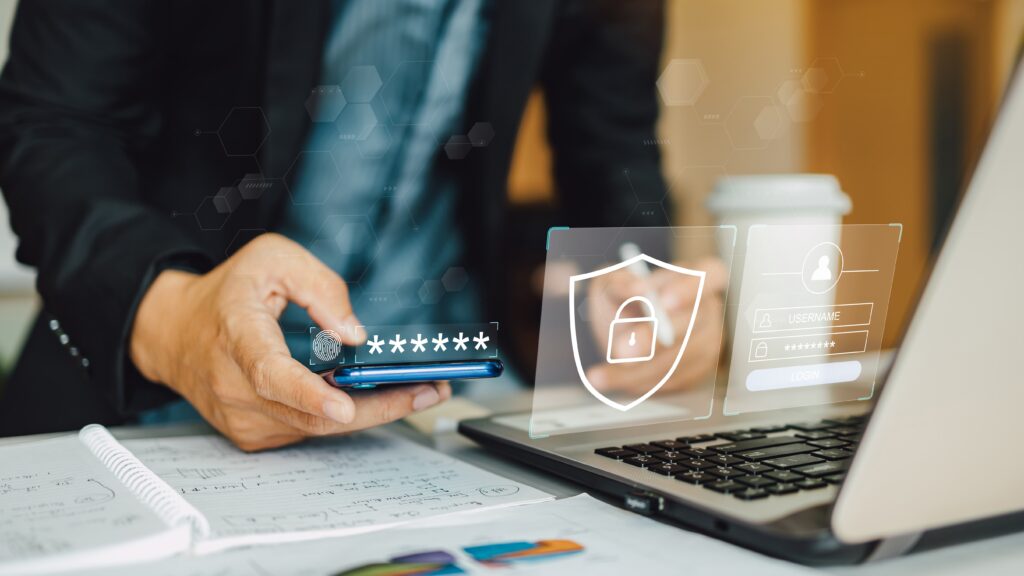Even the most complex passwords are vulnerable, putting sensitive data at risk. One effective method to enhance security is with MFA tools. MFA, or multi-factor authentication, adds extra layers of protection to digital accounts by requiring users to verify their identity using multiple methods. Businesses can significantly reduce the risk of unauthorized access by leveraging multi-factor authentication.
Read on to learn how companies use multi-factor authentication today and the effect its implementation could have on essential insurance protection.
What are MFA tools?
Multi-factor authentication provides a robust security framework by requiring users to present two or more forms of authentication before gaining access to systems or applications. These tools combine:
- Something known, like a password or PIN
- Something owned, such as a smartphone or security token
- Something inseparable, including biometric data like fingerprints or facial recognition
By requiring multiple factors, these tools create barriers that make it harder for cybercriminals to breach systems.
Why are MFA tools important?
Relying solely on passwords is no longer enough. Cybercriminals have increasingly sophisticated methods for stealing login credentials. Multi-factor authentication reduces this risk by adding additional layers of security.
These capabilities help to:
- Enhance data security – Multiple authentication steps make it difficult for attackers to gain unauthorized access.
- Protect against phishing – MFA can prevent unauthorized logins even if a password is compromised.
- Comply with regulations – Many industries require MFA as part of their cybersecurity compliance standards.
- Reduce financial impact – Preventing breaches saves businesses from costly recovery efforts and damage to their reputation.
Also read: Why Your Business Needs Cyber Liability Insurance
How can your business use MFA tools?
To get the most out of MFA tools, businesses should select solutions that integrate seamlessly with their existing systems. This ensures that deployment is smooth and does not disrupt daily operations while providing flexibility and scalability as businesses grow.
Training employees on the effective use of multi-factor authentication is also essential. Proper training helps staff understand the importance of these tools and how to navigate authentication procedures confidently. Businesses should regularly review and update security settings, strengthening multi-factor authentication configurations over time to keep defenses strong against evolving cyber threats.
Businesses of all sizes can implement MFA tools to protect their operations, such as through:
- Securing remote work environments – Where multi-factor authentication verifies the identity of remote employees accessing company systems.
- Protecting sensitive customer data – By adding additional layers of security, reducing the risk of data breaches.
- Enhancing financial transaction security – Through securing banking platforms and internal payment processes.
Types of multi-factor authentication
Multi-factor authentication comes in various forms, each offering distinct methods for verifying user identity. SMS and e-mail codes are among the simplest and most widely used options. These codes are sent directly to users and must be entered to complete the login process. Authenticator apps, such as Google Authenticator, generate time-sensitive codes that provide an additional layer of security.
A few other types include:
- Biometric solutions: Including fingerprint scanners and facial recognition technologies, offering advanced security by relying on unique physical characteristics.
- Hardware tokens: Physical devices that generate unique access codes.
- Push notifications: A user-friendly method that sends verification prompts to mobile devices, allowing for quick and convenient authentication.
Also read: Managing Cyber Liability and Data Security in Community Associations
Steps to set up MFA tools
Setting up MFA tools for your business does not have to be complex. Follow these steps to get started:
- Evaluate your business needs. Identify the systems that require added security.
- Select the right tools. Choose ones that align with your operational requirements.
- Implement gradually. Roll out solutions in phases, prioritizing critical systems.
- Educate your workforce. Ensure employees understand how to use the tools and the benefits they offer.
- Monitor and adjust. Continuously review and improve your implementation strategy.
MFA tools are essential for MPA insurance
Businesses that work with McGowan for their insurance must adopt multi-factor authentication to meet insurance requirements. These tools are essential for maintaining robust cybersecurity and mitigating the risk of cyberattacks. Failure to implement MFA can lead to increased vulnerabilities and complications with insurance coverage.
This protection is essential. As technology evolves, so do the tactics of cybercriminals. Insurance such as Cyber Liability insurance from McGowan MPA provides critical protection for businesses, particularly CPAs. This coverage helps mitigate the financial burden of cyber incidents and ensures that firms have the support they need.
Coverage options include:
- First- and third-party coverage: Protects against losses incurred by both your firm and external parties
- Data breach notification costs: Covers expenses associated with notifying affected parties
- Breach response mitigation services: Offers credit or identity monitoring services
- Forensic and legal expenses: Provides financial assistance for investigation and legal representation
- Crisis management and public relations: Helps manage reputation risks
- PCI fines and regulatory defense: Covers penalties and defense costs
McGowan MPA offers coverage tailored to industries such as accounting, financial services, healthcare, technology, and more. As cyber risks grow, having reliable insurance from McGowan ensures your business remains protected. Learn more about Cyber Liability insurance offerings and contact us for assistance today.
Implementing every protection available is a vital step toward strengthening your cybersecurity framework. Coupled with comprehensive Cyber Liability insurance, your business can confidently navigate today’s complex threat landscape.


